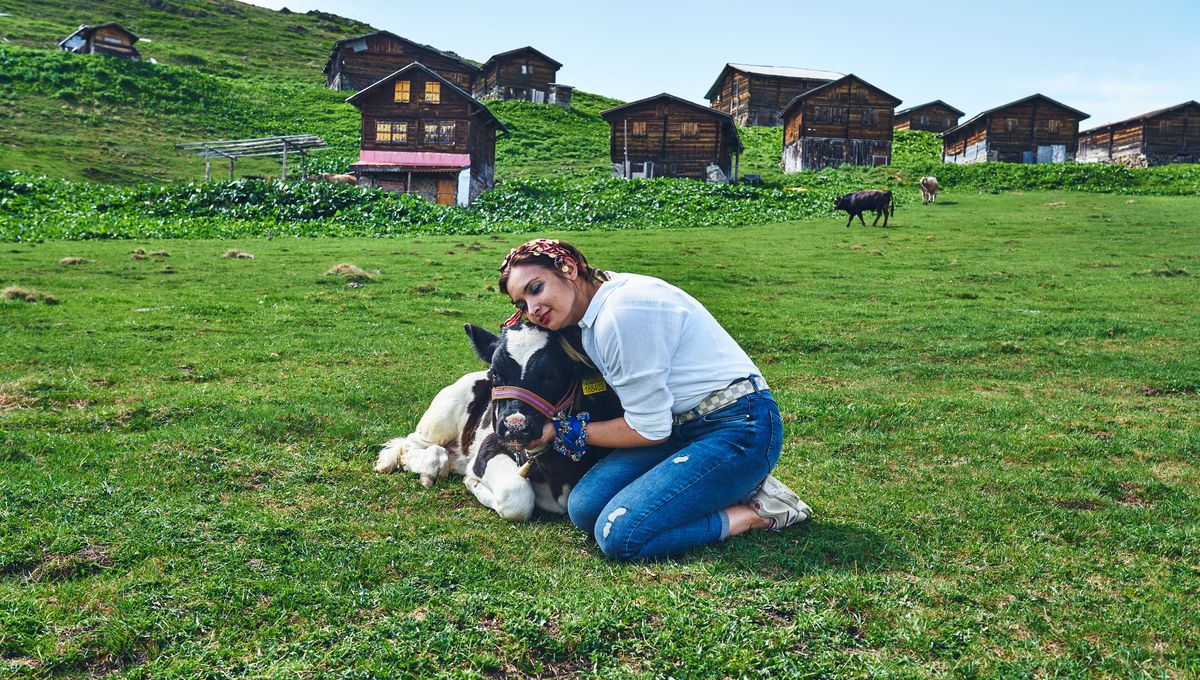
We’ve all heard of the many benefits of interacting with animals as therapy, but what about the animals themselves? Does that interspecies solidarity go both ways? Well, according to a recent study, the answer is yes … if you’re a cow.
“Bovine-assisted therapy may not only be an effective treatment model that benefits human participants,” confirmed Katherine Compitus, Clinical Assistant Professor at New York University and one half of the research team behind the paper, in a statement.
“[It] appears to be enriching to the cattle participants as well,” she explained, “as shown by their proximity to and continuous interactions with humans.”
Now, we know what you’re thinking: how do you measure the happiness of a cow? And the answer is, “using a surprisingly lengthy and deeply researched standardized metric.” The Human-Animal Interaction Scale (HAIS) is a 24-item self-report instrument designed to assess interaction with a therapy animal, albeit usually ones like dogs or cats rather than 500 kilograms (1,100 pounds) of Holstein steer.
The HAIS is holistic, measuring the experience from both species’ perspectives. The first part of the HAIS records how the human experienced the animal therapy session, with 10 questions on positive interactions and two about negative ones. It’s the second half that’s interesting, though, since that’s the bit that measures how the animals feel about it.
Well, to be more accurate, the second half measures how the humans think the animals feel about it – for obvious reasons, it’s difficult to interview a cow. But despite their kind of barely sentient reputation, cows “are not just simple herd animals, but instead show evidence for complex cognitive and social behaviors, as well as rich emotional lives,” explains one 2017 paper cited in the study, and it’s actually not too difficult to pick out happiness among the range of bovine emotion.
“Cattle that are uncomfortable with a human presence […] show an increase in stress signals such as vocalizations when involved in therapy work,” the study notes, “while cattle that enjoy human company will have reduced stress signals.” A happy cow, it explains, may lie down – something they do only when they feel safe – or start to lick or smell its human therapee, since “cows are known to engage in [social grooming] and the licking behavior may indicate familiarity or a desire to establish a rapport.”
And that’s exactly what the researchers saw: after 45 minutes of contact with humans, the therapy cows were almost universally happy to accept food, hugs, and pets from the participants, and often licked and smelled their new bipedal pals. With just one caveat.
Turns out, cows prefer women. “The steers showed a strong preference or interactions with women compared to men,” Compitus said. “In turn, the women reported stronger attachment behaviors towards the steers.”
But whether that’s because of some womanly allure or just some male shyness is currently not known, she added. “It is unclear without further testing whether the animals sought out the attention of women in general,” Compitus explained, “or if the women were more likely to initiate the actions when compared to the men participants.”
Nevertheless, the study has revealed that bovine-assisted therapy – so far, a barely researched part of an already under-researched area – is effective and beneficial, not only for the humans involved, but for the cows themselves.
“Animal-assisted therapy […] has been studied with a variety of populations and conditions, from treating substance abuse to autism, often with positive results,” the paper notes. “However, to date there has been little research addressing the therapeutic benefits of animal-assisted interventions with farm animals.”
“This [study] is exciting,” it adds, “in that it opens up a new area on whether some therapies may be initially stronger based upon gender and not procedure.”
The study is published in the journal Human-Animal Interactions.
Source Link: Cuddling Cows Is Great Therapy For You (And The Cow)